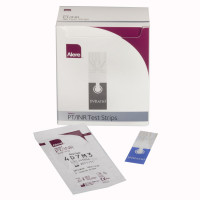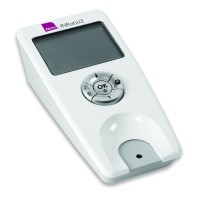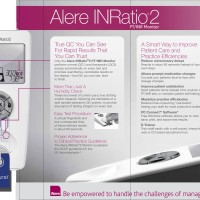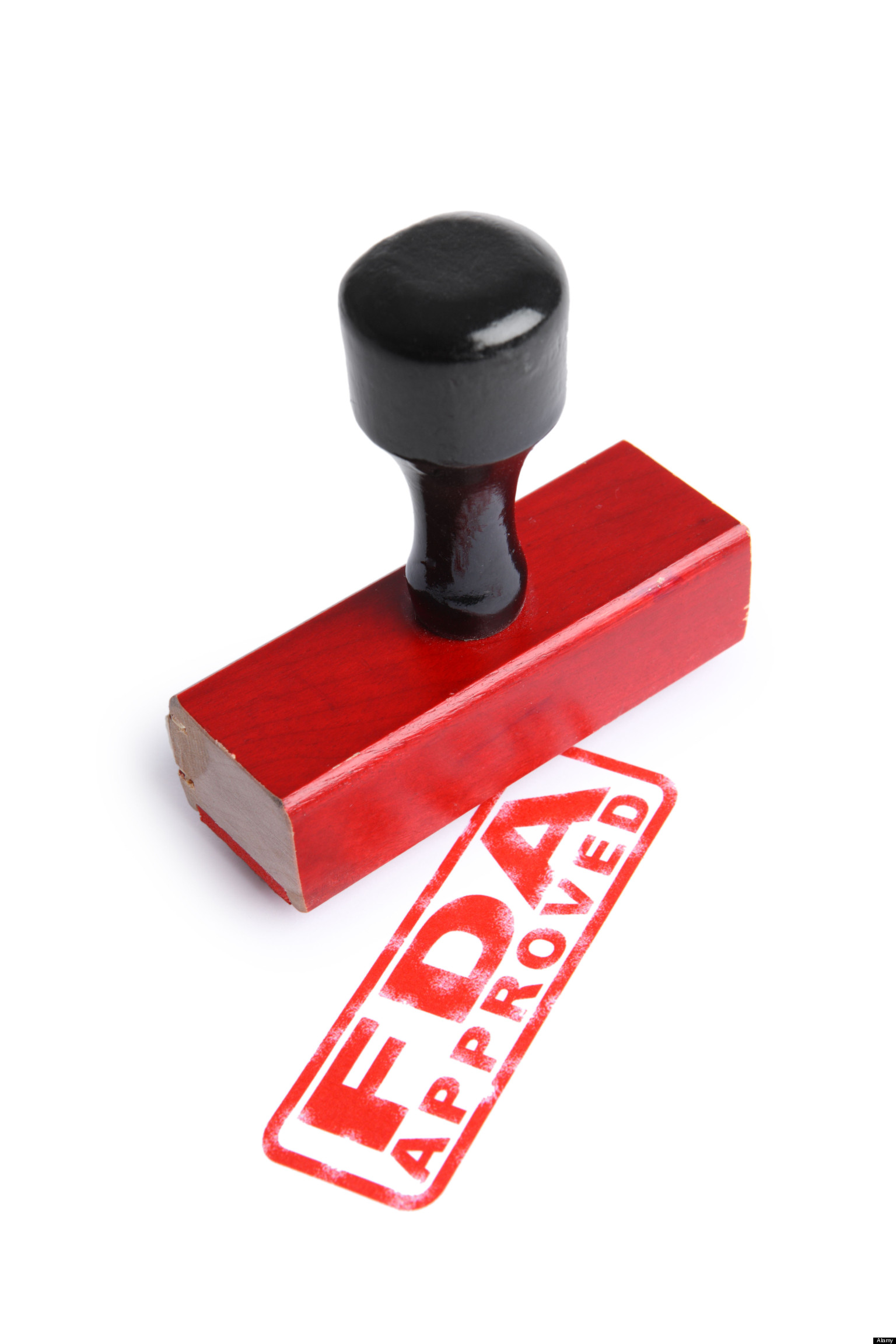
FDA’s 510(k) program allows medical device makers to skip clinical trials
 Under a little-known FDA process, medical device makers selling products similar to previously-approved devices are able to forego the burdensome and costly traditional approval process. The FDA’s Premarket Notification program allows medical device makers like Alere to sell their products to consumers more rapidly, but critics say the process puts the public at risk because these devices are not subjected to important safety tests.
Under a little-known FDA process, medical device makers selling products similar to previously-approved devices are able to forego the burdensome and costly traditional approval process. The FDA’s Premarket Notification program allows medical device makers like Alere to sell their products to consumers more rapidly, but critics say the process puts the public at risk because these devices are not subjected to important safety tests.
This program, known as the 510(k) clearance process after its section number in the Food, Drug and Cosmetic Act, requires medical device makers to establish “substantial equivalence” to another device previously approved by the FDA. By demonstrating substantial equivalence, a medical device manufacturer can essentially fast track approval of their medical device to market. Typical approval time after a submission is made is 90 days and in most cases, does not require any clinical trials. The 510(k) clearance program also allows medical devices to sell their products before having their facilities inspected by the FDA.
The 510(k) program has been around since 1976, when it was implemented as part of the Medical Device Amendments. In 1986, the FDA issued guidance on the 510(k) program with a document known as the “Mohan Memorandum,” which provided an analytical framework for medical device makers to demonstrate substantial equivalence. See Guidance on the CDRH Premarket Notification Review Program 6/30/86 (Memorandum K86-3). Under this guidance, a device like the Alere INRatio can be found substantially equivalent to a previously-approved device (known as a “predicate device”) if:
- the new device has the same intended use and the same technological characteristics as the predicate device, or
- the same intended use and different technological characteristics that do not raise new questions of safety or effectiveness.
The Mohan Memorandum also controversially allowed for the use of multiple predicate devices to demonstrate substantial equivalence, meaning medical device makers could rely on one predicate device with similar use or indications and rely on another entirely different predicate device with similar technological features.
How did the Alere INRatio get FDA approval so quickly?
 Medical devices manufacturers seeking approval under 510(k) regulations (found at 21 CFR Part 807 Subpart E) must demonstrate their new device is at least as safe and effective as another, similar predicate device already on the market. A device may be approved by the FDA under 510(k) regulations if the new device is determined to either have the same intended use and technological characteristics as the predicate device or has the same intended use with different technological aspects with data submitted to the FDA for review. If the medical device is found to have substantial equivalence the manufacturer will receive a letter from the FDA notifying them of the device’s 510(k) clearance.
Medical devices manufacturers seeking approval under 510(k) regulations (found at 21 CFR Part 807 Subpart E) must demonstrate their new device is at least as safe and effective as another, similar predicate device already on the market. A device may be approved by the FDA under 510(k) regulations if the new device is determined to either have the same intended use and technological characteristics as the predicate device or has the same intended use with different technological aspects with data submitted to the FDA for review. If the medical device is found to have substantial equivalence the manufacturer will receive a letter from the FDA notifying them of the device’s 510(k) clearance.
If a device is determined to be “Not Substantially Equivalent,” the manufacturer may resubmit a 510(k) request with additional data, request to have the device’s safety reclassified, or seek Pre Market Approval. Devices found to be Not Substantially Equivalent are given a Class III designation by the FDA and must submit a letter of reclassification which outlines a description of the product, its labeling, and why it should be reclassified and given SE approval under 510(k) regulations. This appeal letter must be sent within 30 days of the FDA making its determination and takes 60 days to complete. If the FDA retains a Class III safety designation for a medical device it must be sent through Pre Market Approval, a lengthy and costly process.
How does the FDA categorize devices like the Alere INRatio monitor?
Under the Medical Device Amendments to the Federal Food, Drug and Cosmetic Act enacted in 1976, all medical devices are classified into one of three different safety classes depending on the medical risks they pose to consumers. They are as follows:
- Class I: Includes medical devices such as bandages, tongue depressors, and latex gloves. These medical devices pose the lowest risk of injury to consumers and are subject to the least amount of regulatory scrutiny. 95% of devices in this class are exempt from regulation.
- Class II: These devices are considered to pose a moderate risk to consumers but do not require any more data on safety and efficacy be submitted to regulators. They may be required to carry warning labels and be subject to surveillance when placed on the market. Examples of medical devices in this class include wheelchairs and testing devices like the Alere INRatio PT/INR Monitor System and Test Strips.
- Class III: These medical devices are considered to carry a high risk to the consumer’s health or are important to sustaining human life. They require a full PMA review by the FDA. Examples of medical devices in this class include pacemakers and HIV testing supplies. Medical devices failing to demonstrate SE through 510(K) regulations are placed in this class as well.
Who is required to seek 510(k) approval?
There are four categories of parties that must submit a 510(k) to the FDA for approval of a medical device. They include:
- U.S. manufacturers planning to market a medical device or its accessories domestically.
- Foreign medical device manufacturers seeking to market in the U.S.
- Companies which develop the technical specifications of a device but have it manufactured under contract with another firm.
- Repackers and relabelers who make significant changes to aspects of a medical device such as packaging, warning labels, and user manuals.
When is a 510(k) required?
Medical device manufacturers are required to submit a 510(k) under the following circumstances:
- New medical devices seeking approval for commercial distribution.
- Proposing a different use or efficacy for a medical device already on the market.
- Any proposed modifications or changes to an existing medical device which could affect the safety of efficacy of the device.
Alere INRatio monitor system’s 510(k) submission history
 The Alere INRatio PT/INR Monitor System and Test Strips were originally developed by San Jose, California-based medical device company HemoSense. Since 2002, HemoSense and the various subsidiaries it became a part of have submitted five 510(k) requests to the FDA. Below is a chronology of all 510(k) requests made for the INRatio PT/INR monitoring system.
The Alere INRatio PT/INR Monitor System and Test Strips were originally developed by San Jose, California-based medical device company HemoSense. Since 2002, HemoSense and the various subsidiaries it became a part of have submitted five 510(k) requests to the FDA. Below is a chronology of all 510(k) requests made for the INRatio PT/INR monitoring system.
HemoSense’s first 510(k) clearance of the INRatio PT/INR monitor system # K020679
On May 6, 2002, the INRatio PT/INR Monitor System was granted 501(k) approval with this submission. The predicate device it compared itself to was another Prothrombin Time (PT) testing device called the CoaguChek manufactured by Roche Diagnostics. Hemosense asserted its INRatio monitor system device met the standard for substantial equivalence since they both have the same intended use and measure fibrin levels to calculate PT/INR levels.
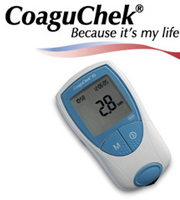 HemoSense received the FDA’s green light in 2002 by essentially comparing the INRatio monitor system to the CoaguChek. Since the INRatio’s 510(k) clearance, the CoaguChek line of INR monitor systems have been the subject of nine recalls, most recently in June 2013 after Roche confirmed CoaguChek XS (the second-generation model of the CoaguChek) received undetected elevated INR test results, which is the same reason the INRatio was later recalled.
HemoSense received the FDA’s green light in 2002 by essentially comparing the INRatio monitor system to the CoaguChek. Since the INRatio’s 510(k) clearance, the CoaguChek line of INR monitor systems have been the subject of nine recalls, most recently in June 2013 after Roche confirmed CoaguChek XS (the second-generation model of the CoaguChek) received undetected elevated INR test results, which is the same reason the INRatio was later recalled.
The CoaguCheck’s history of recalls after the HemoSense relied on it for 510(k) approval of the INRatio monitory system reveals deep flaws with the FDA’s Premarket Notification program. Under the 510(k) approval process, when a device is recalled and that device was relied on by subsequent devices as a predicate device, the subsequent devices may not be subject to the same recall. In other words, Device X could rely on Device Y for 510(k) clearance. Device Y is recalled for having a dangerous defect, but Device X continues to be sold to consumers, who may be put at risk of serious injury.
HemoSense INRatio PT/INR Monitor System second 510(k) clearance # K021923
 On Oct. 24, 2002, Hemosense obtained 501(k) clearance for the INRatio PT/INR Monitor System by demonstrating substantial equivalence to its already approved INRatio monitoring system. This particular 501(k) was for home use (with physician directions). It was identical to its predecessor except for the labeling.
On Oct. 24, 2002, Hemosense obtained 501(k) clearance for the INRatio PT/INR Monitor System by demonstrating substantial equivalence to its already approved INRatio monitoring system. This particular 501(k) was for home use (with physician directions). It was identical to its predecessor except for the labeling.
2007 510(k) clearance of the INRatio Monitor System # K072727
On Oct. 26, 2007, the INRatio2 PT/INR Monitor System was a hardware and software modification of the first general INRatio monitoring system. Hemosense asserted both devices had the same intended use to demonstrate substantial equivalence. Because it was a modification of an already 501(k) approved medical device, HemoSense submitted a Special 501(k) which allowed them to declare the new device was in conformance with the old one without submitting any testing data.
BioSite receives FDA 501(k) clearance for INRatio test strips # K092987
 On June 11, 2010, BioSite (a subsidiary of Inverness Medical Innovations, which acquired HemoSense in 2007) received 510(k) clearance for test strips used with the INRatio2 Monitor System. BioSite had requested labeling changes for INRatio test strips, which had already received 501(k) approval in December 2007.
On June 11, 2010, BioSite (a subsidiary of Inverness Medical Innovations, which acquired HemoSense in 2007) received 510(k) clearance for test strips used with the INRatio2 Monitor System. BioSite had requested labeling changes for INRatio test strips, which had already received 501(k) approval in December 2007.
Alere’s 2012 changes to INRatio test strips – 510(k) # K110212
On May 1, 2012, Alere San Diego, Inc. (a wholly owned subsidiary of Alere, which changed its name from Inverness Medical Innovations in 2010) received 510(k) clearance for another modification to the INRatio test strips used as part of the INRatio2 PT/INR Monitor System. The changes involved technical modifications, length of storage time, and operating parameters. Performance expectations were also modified to inform consumers the device was not suitable for patients transitioning from heparin treatment to warfarin therapy. Alere San Diego was able to demonstrate substantial equivalence with its previous generations of Test Strips which were 510(k) approved.
Criticisms of the 510(k) process
 Experts studying the issue of prescription drug and medical device approval have criticized the FDA’s 510(k) program as a conflict of interest that puts approval speed before consumer safety. The program has also been criticized for failing to adequately regulate devices that have relied on recalled predicate devices.
Experts studying the issue of prescription drug and medical device approval have criticized the FDA’s 510(k) program as a conflict of interest that puts approval speed before consumer safety. The program has also been criticized for failing to adequately regulate devices that have relied on recalled predicate devices.
Because the FDA takes a significant fee from companies seeking approval of their medical devices it has been alleged this can be a conflict of interest. Under the Premarket Notification program, medical device manufacturers are able to have their products approved in as little as 90 days by simply self-verifying their product as having the same intended use and technology as another approved device. Since full clinical trials were not conducted under the 510(k) program, consumers may be endangered by a medical device that has not been properly vetted.
Manufacturers of Xarelto, Risperdal, metal on metal hip implants, and power morcellators are all facing multiple lawsuits because they failed to warn consumers of the dangers posed by their 510(k) approved medical products. The Institute of Medicine (IOM) has called for the 510(k) to be replaced with legislation that would develop a pre and post market regulatory system to better protect consumers from the dangers of flawed medical devices.
What can I do if I’ve been hurt by an Alere INRatio?
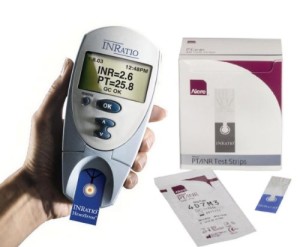 If you or someone you love was seriously injured or died during a bleeding event after receiving an erroneously low INR reading when using an Alere INRatio Monitor System, The Cochran Firm, D.C. can help. You may be entitled to compensation for lost wages, hospital bills, pain and suffering, and other expenses. We have a team of dedicated and experienced attorneys who are actively investigating claims of serious injury related to the defective Alere INRatio Monitor System.
If you or someone you love was seriously injured or died during a bleeding event after receiving an erroneously low INR reading when using an Alere INRatio Monitor System, The Cochran Firm, D.C. can help. You may be entitled to compensation for lost wages, hospital bills, pain and suffering, and other expenses. We have a team of dedicated and experienced attorneys who are actively investigating claims of serious injury related to the defective Alere INRatio Monitor System.
Because strict time deadlines apply when filing a claim we ask that you please contact us at your earliest convenience in order to preserve your rights. Call us at 202-682-5800 or 24/7 at 1-800-THE-FIRM (843-3476) or fill out a contact form on our website for a free, prompt, and confidential case review. Because we represent clients on a contingency basis, there is no fee unless you win.

